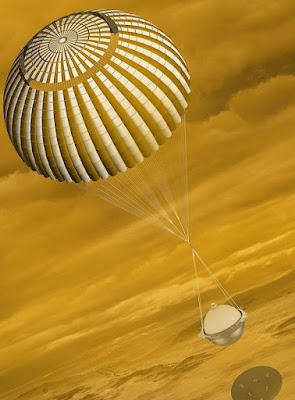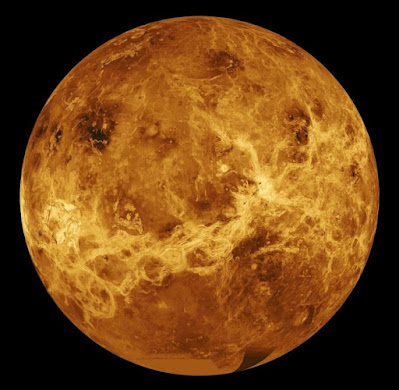• NASA is preparing for an unprecedented trip to our neighboring planet Venus called DAVINCI (Deep Atmosphere Venus Investigation of Noble Gases, Chemistry, and Imaging).
• This groundbreaking project seeks to answer long-standing puzzles about Venus, focusing on its atmosphere, geology, and possibilities for previous habitability. Here's all you need know about this big endeavor.
Mission Overview
• The DAVINCI project is intended to examine Venus, sometimes known as Earth's "twin" due to its comparable size and composition.
• Despite this likeness, Venus is drastically different—a hellish globe with surface temperatures surpassing 450°C and a carbon-rich atmosphere.
• Scientists believe Venus was previously more hospitable, with oceans and a stable temperature, making it an important target for studying planetary development.
The mission will include two components:
1. Flyby Spacecraft: Conducts remote sensing of Venus' atmosphere and surface.
2. Descent Probe: Entering Venus' dense atmosphere to directly investigate its chemical composition and surface features.
Key Objectives
1. Examine Venus' Atmosphere
Analyze noble gases and isotopes to learn about the planet's atmospheric history. Measure important gases such as carbon dioxide and sulfuric acid to better understand the chemical processes that shape the environment.
2. Investigate geological features
Focus on Alpha Regio, a mountainous region thought to represent an old continent. Take the first high-resolution photographs of Venus' surface behind the clouds.
3. Learn about planetary evolution. Compare Venus' conditions to Earth's to see why the two worlds took such different paths. Determine whether Venus ever had liquid water and a more Earthlike climate.
The Journey to Venus
• The DAVINCI spacecraft is slated to launch in the early 2030s and arrive at Venus after a months-long trip. It will make two flybys of the planet before launching its fall probe.
• The probe will plummet through Venus' dense atmosphere, taking data and photos for an hour before reaching the surface. Notably, this will be the first probe to examine Venus' surface since the Soviet Venera missions in the 1980s. The descent will yield crucial information about the planet's geology, atmospheric layers, and chemical interactions.
Scientific Innovations
• DAVINCI leverages cutting-edge technology to address the challenges offered by Venus' severe environment.
The descending probe comes equipped with:
Mass spectrometers are used to analyze gases and isotopes.
Cameras to capture high-resolution photographs as it descends.
Temperature and pressure sensors are used to map atmospheric layers.
The mission team has also reanalyzed older data from previous Venus missions to improve maps of Alpha Regio and uncover new geological patterns that will guide the probe's descent.
Why Venus Matters
• Venus provides a peek of what Earth's future might look like under certain climate circumstances.
• Scientists expect that examining its atmosphere and geology will provide insights into planetary habitability, greenhouse effects, and the evolution of rocky planets. These findings could help researchers study exoplanets with similar properties.
Challenges and Significance.
• Exploring Venus is no easy task. The planet's dense atmosphere, crushing surface pressure, and extreme temperatures create considerable technical hurdles. However, the scientific benefits outweigh the hazards.
DAVINCI promises: Rethink our concept of Venus. Provide information about the Earth's past and future. Help in the quest for life on exoplanets.
Looking ahead
• The scientific world is buzzing with anticipation as we prepare for the DAVINCI mission. Venus is still one of the least understood planets in our solar system, but DAVINCI's pioneering research could change that.
• With modern technology and a strong focus on critical scientific topics, this mission has the potential to uncover Venus' innermost mysteries.












.jpeg)


0 Comments